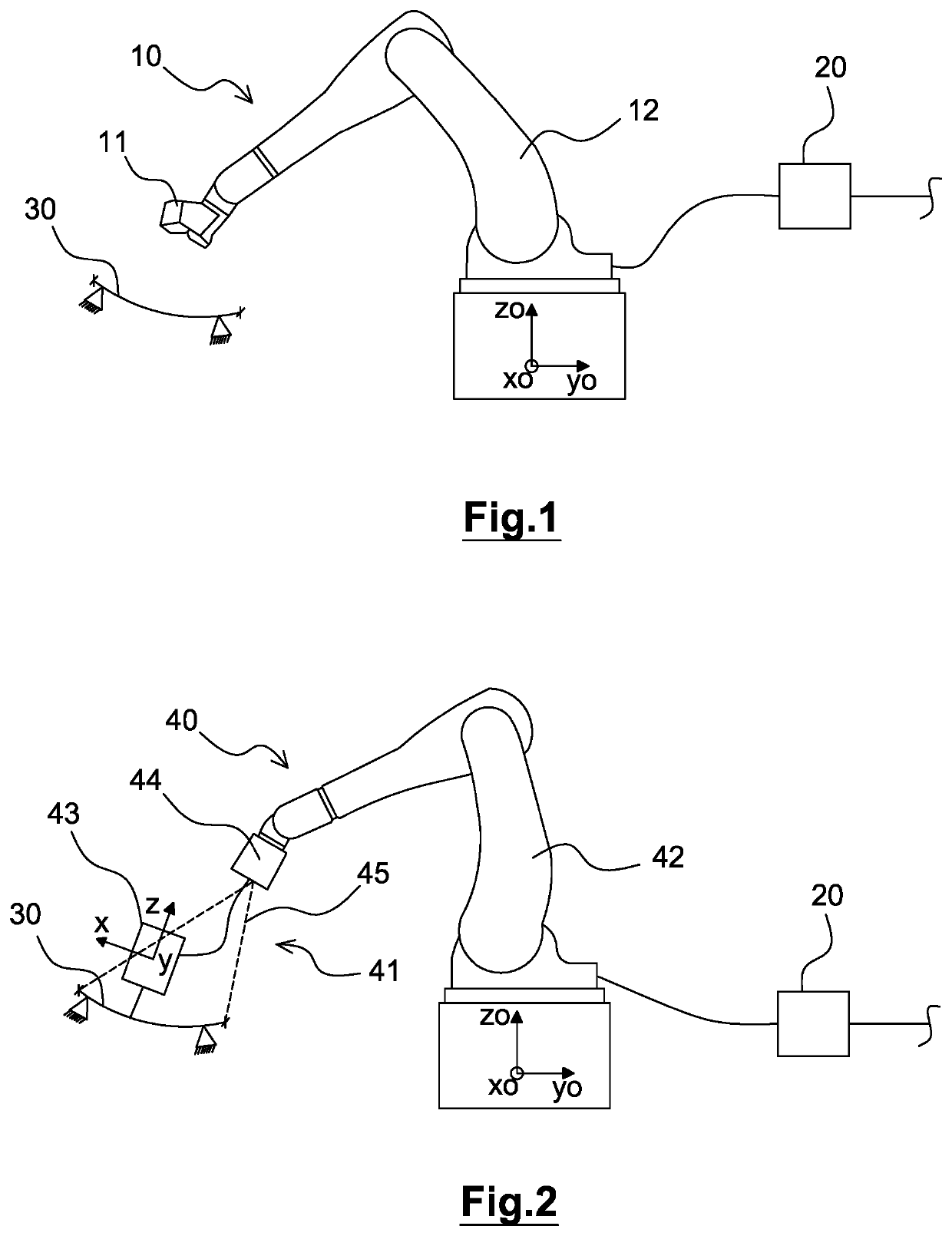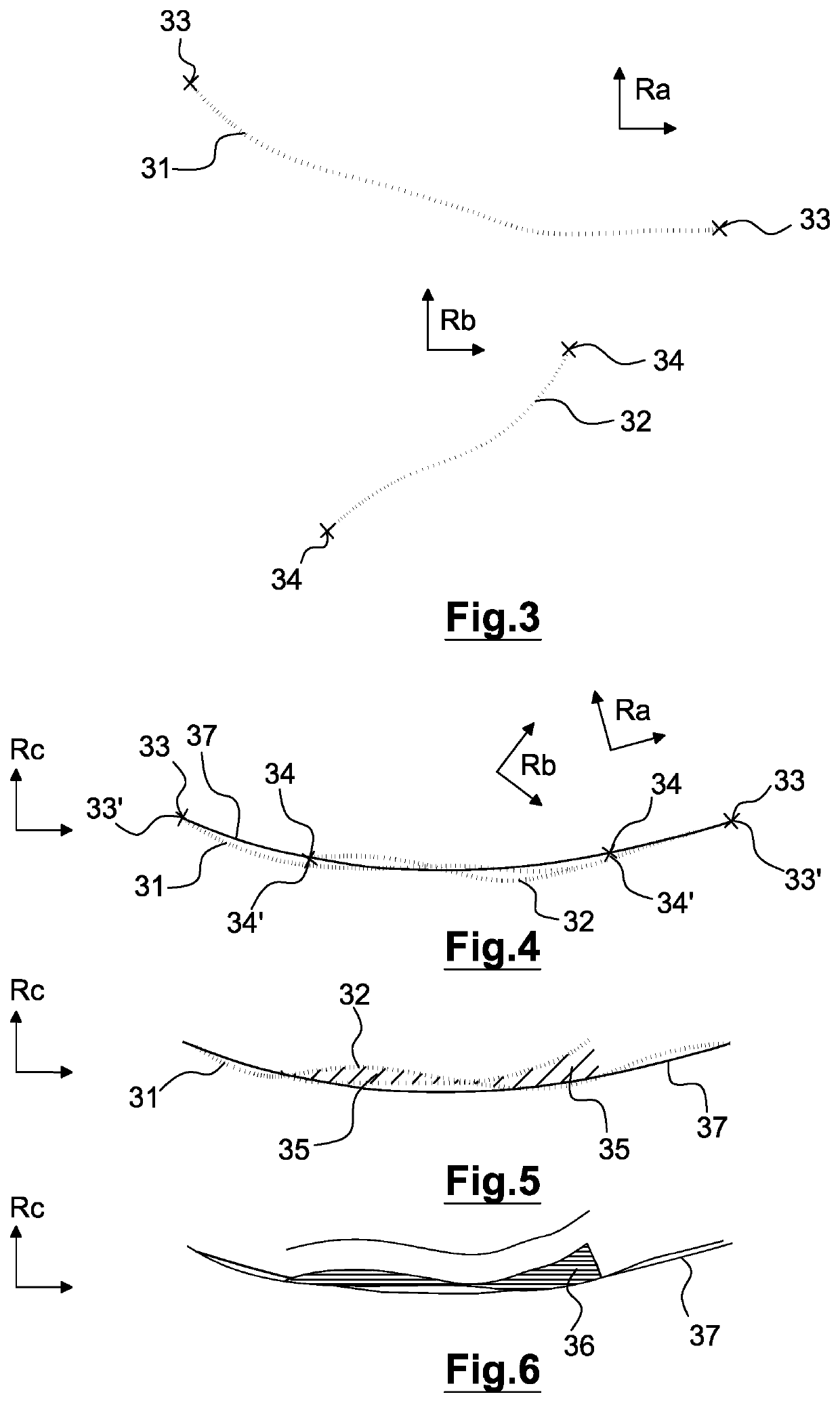Device and method for correction of geometrical differences of the surfaces of parts to be assembled at the assembly interface
a technology of geometric differences and devices, applied in the field of parts assembly, can solve problems such as inability to guarantee the deformation of parts, discrepancies in the geometry of nominal surfaces, and distortion of shapes and dimensions
- Summary
- Abstract
- Description
- Claims
- Application Information
AI Technical Summary
Benefits of technology
Problems solved by technology
Method used
Image
Examples
Embodiment Construction
[0051]The present invention relates to a device for correction of geometrical differences of the surfaces of two parts that are brought into contact during assembly of said two parts. These surfaces that are brought into contact, termed “assembly surfaces” in the present description, are intended to be disposed facing one another when assembling the parts.
[0052]The description and the drawings refer to the surfaces of the parts in contact. Although only said surfaces are represented, it must be understood that the parts can be any shape and that the invention can be applied, for example, to thin parts such as cladding panels or to profiled elements or to thick parts of any shape, with no particular limitations as to dimensions and materials other than may be imposed by the means employed.
[0053]The correction device comprises acquisition means 10 by measurement of the geometry of the surfaces of at least two parts to be assembled in an area of each of the parts the surface of which m...
PUM
| Property | Measurement | Unit |
|---|---|---|
| thickness | aaaaa | aaaaa |
| forces | aaaaa | aaaaa |
| structure | aaaaa | aaaaa |
Abstract
Description
Claims
Application Information
 Login to View More
Login to View More - R&D
- Intellectual Property
- Life Sciences
- Materials
- Tech Scout
- Unparalleled Data Quality
- Higher Quality Content
- 60% Fewer Hallucinations
Browse by: Latest US Patents, China's latest patents, Technical Efficacy Thesaurus, Application Domain, Technology Topic, Popular Technical Reports.
© 2025 PatSnap. All rights reserved.Legal|Privacy policy|Modern Slavery Act Transparency Statement|Sitemap|About US| Contact US: help@patsnap.com


